
Students and engineers
The history of École des ponts et chaussées is deeply linked to the history of the development of the French territory. It has been a defining element in the development of our roads, of course, our exchanges in general, and beyond that, our economy and our society. Telling its story also means telling the story of the men and women who have helped shape our country since the 18th century.
The School began with Trudaine and Perronet
In 1744, Daniel-Charles Trudaine, Intendant of Finances, in charge of designing the bridges and roads of France, created the Bureau des Dessinateurs du Roi (Royal Office of Designers). Its mission was to survey and plan the roads of France. This was the major undertaking of the Atlas de Trudaine roadmaps, which turned out to be difficult to produce as the young Corps des ponts et chaussées, created in 1716, did not contain enough engineers. New recruits therefore had to be trained.
In 1747, Trudaine entrusted Jean Rodolphe Perronet, the engineer of the Generality of Alençon, with the mission of creating and organizing this training within the Bureau; this was the birth of the School. Young students were "employees" of the State from the moment they began studying.
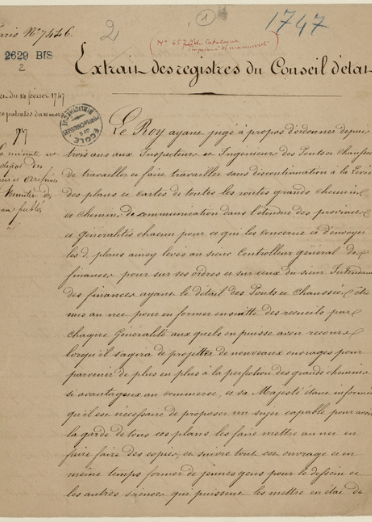
Most of the teaching was done in the field. During the first decades, the students were sent to the construction sites of the roads of France, then once the Atlas de Trudaine was completed, they went on to other sites.
An original method was used for teaching theory: the best students taught the others, except for architecture which was taught by the great architects of the time (Blondel, Dumont, Daubenton).
The School during the Revolution

During the Revolution, the School went through a turbulent period. It lost its best students, who left for the army, and was no longer able to train those who remained. At the end of 1793, due to the difficulties experienced by the École du Génie (School of Engineering), it was entrusted with training both military and civil engineers and was temporarily named the École des Travaux Publics (School of Public Works).
In 1794, it also lost its first director, Perronet, after almost 40 years. His successor, Jacques Élie Lamblardie, then proposed the creation of a preparatory school, under the provisional name of École centrale des travaux publics, followed by École Polytechnique (1794), for the wide range of sciences taught. Its primary purpose was to replace the other engineering schools. However, École des ponts et chaussées eventually became a school of application, focusing on practical work and specialization.
The De Prony era: structuring of the School
In 1798, Gaspard Riche de Prony became the fourth director of the school, and remained in this role for some forty years. Under his leadership, the School gave structure to its teaching system. This era marked the end of mutual education, which was less suited to the theoretical learning of specific techniques, and general disciplines were now taught at Polytechnique. Four courses were initially created, which would change with the decrees issued to define the organization of the School, notably the Decree of 1804.
The imperial Decree of August 25, 1804, concerning the Corps des ponts et chaussées, devoted the title “X” to the School and a new organization. A School Council was created, including three Inspectors General (including the Director of the School), a Chief Engineer Inspector and three professors. This council met monthly and was responsible for managing the establishment and monitoring the education of 60 students.
The minutes of each Council meeting record the entire history of the School in great detail and constitute a valuable documentary resource. The decree also determined the distribution of apprenticeships among the three professors, who were in charge of courses in applied mechanics, civil architecture and drawing arts, applied stereotomy and construction practice.
During these years, the School sometimes struggled with its organization. A succession of internal regulations were issued to resolve certain problems (attendance, flow of students in and out, methods of appointing engineers, etc.) and to formalize decisions made according to the military context in France or the availability of teachers. Thus, this imperial decree was the first in a series which, during the 19th century, gradually shaped the way the School operated.
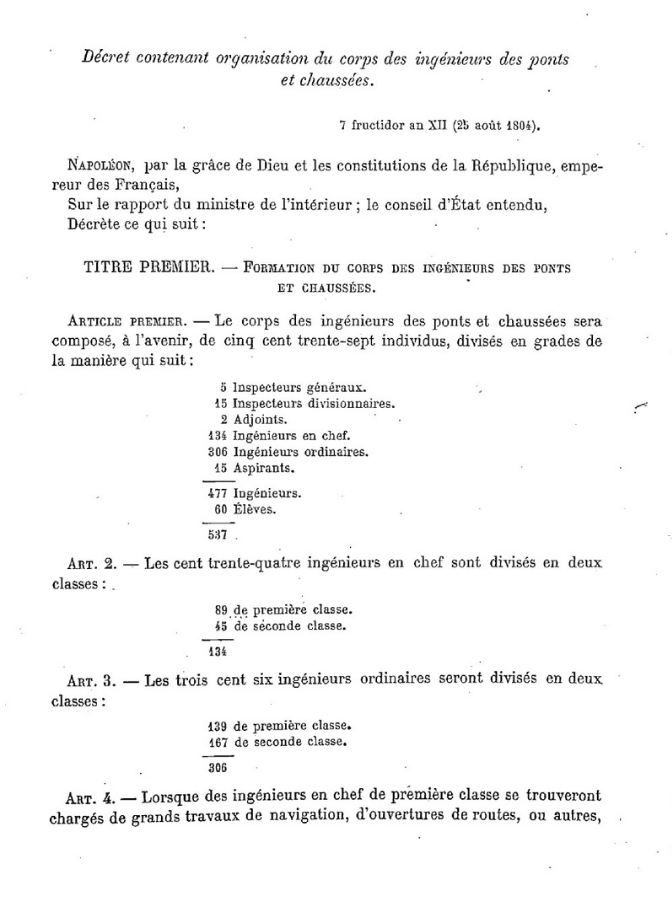
The reforms of the second half of the 19th century and the increase in the number of students
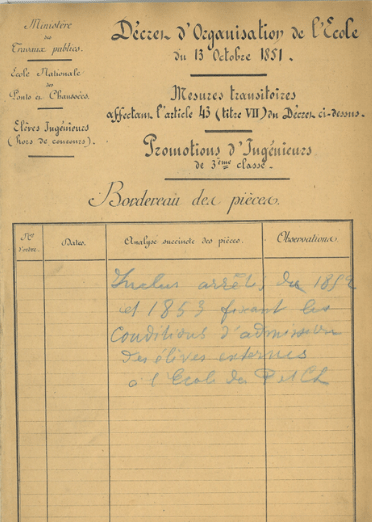
After De Prony's death, the reforms launched under his leadership led to significant improvements. Among the major decrees is that of October 13, 1851, which covers the developments of the previous years, but above all institutes a second body alongside the School Council, the Conseil de Perfectionnement.
The goal of this Council was to discuss all the measures intended to improve teaching: quality of teachers, writing and printing of course materials for students, examinations and competitive exams, etc. But above all, it was responsible for establishing the provisional classification of students, as well as the list of awards and merits.
Another notable change is that the School opened up to external students, both French and foreign, who were not Polytechnique students. The difficulties encountered by this category of students in keeping up with the courses led to the creation of preparatory classes from 1875 onwards. Finally, by Decree of July 18, 1890, Ponts et chaussées “conducteurs” (engineers) who could prove that they had been working for six years were also admitted to the external competitive exams.
The permanent installation of the School in the Hôtel de Fleury, Rue des Saints-Pères, in the mid-19th century, after a century of successive moves, offered the possibility of expansion and allowed for an increase in the number of students and classrooms.

It also allowed the Ministry to entrust its "flagship" school with the responsibility for some of its services, which were for the most part grafted onto services already existing at the School: a central repository of precision instruments (1849), a repository of machines and devices necessary for engineers, a repository of models, a laboratory and experimental workshop intended for the progress of construction science (1851), an atlas of ports (1868), keeping of the register of the vessel measurement scale (1881), etc.

The war effort and restructuring
The First World War was a turning point in this development. During this period, the School, which had been preparing its students for war since the military law of the 1870s, devoted itself entirely to the war effort: its students, staff members and the Corps des ponts in general paid a heavy price; likewise, most of its premises were placed at the disposal of war-related organizations.
Teaching had to be extensively reorganized. Some subjects were removed and others were brought in, relating to the technological progress made during the war and to reconstruction.
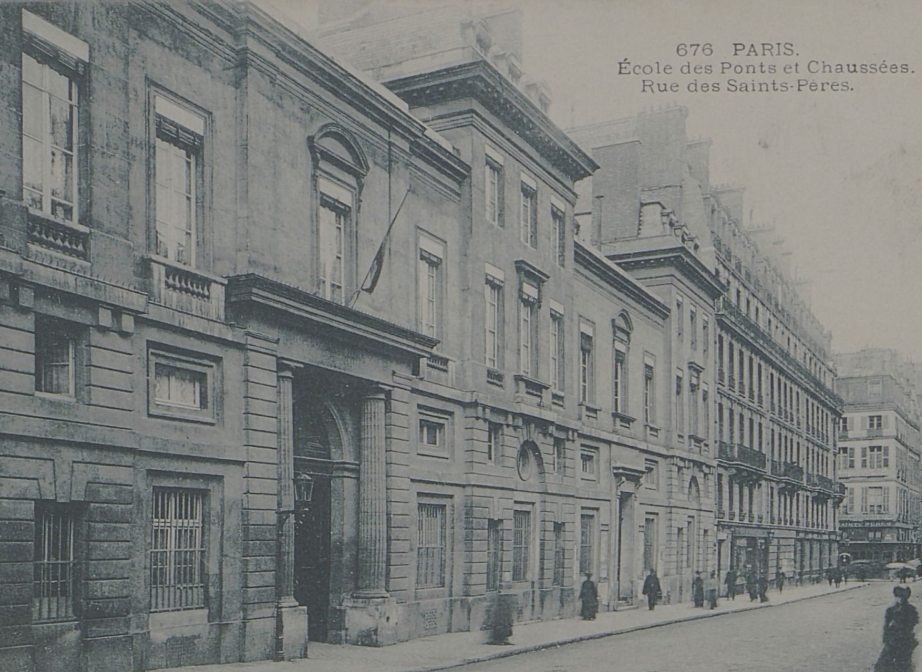
Between the wars, the School temporarily acquired civil status and financial autonomy. The School Council and the Conseil de Perfectionnement saw their responsibilities evolve; a Teaching Committee was created in 1922 to replace the School Council.
In the mid-20th century, it also gradually lost the various ancillary services that were under its responsibility. On the other hand, its laboratory grew and became independent in 1949, under the name of the Laboratoire Central des ponts et chaussées.
The Second World War marked a new turning point. The recently created Ministry of Reconstruction and Urban Planning expressed a growing need for young and specialized engineers.
With the increase in student numbers and the specialization of training courses, rethinking teaching became essential.

Successive reforms and modernization of education in the 20th century
Before 1968, the recruitment of students, the organization of schooling and the monitoring of students were under the responsibility of the School’s director and the inspector. From 1963 onwards, discussion around teaching developed, culminating in the 1968 reform.

At the same time, teaching became ever more specialized, with the introduction of teaching options divided into major fields in the third year and specialized courses as of 1962.
Permanent bodies were gradually set up: the Centre Pédagogique de Calcul (to become the Direction des Systèmes d'Information) in 1968, the Direction des Etudes the following year, whose first manager was Jean-Marie Garnier, and the Formation Permanente (to become Formation Continue) in 1970.
The following decade saw the consolidation of this new form of organization and the establishment of the foundations of a modern school: research came back in force in the form of a Department of Post-School Training and Research in 1975. The Mission des relations avec la profession was created, and the Centre pédagogique de documentation et de communication replaced the former Service central de documentation in 1978.
Moreover, the international dimension, present since the 18th century, became a major component of the School, including teaching of foreign languages (the language department was created in 1981), internships abroad, training for foreigners, scientific cooperation.
In the 1980s, the focus was on “consolidation”, “development” and “structuring” of these bodies, paving the way for a new decisive reform which came into effect in 1983.
This was also the period when different course options were created, and then colleges, in 1993, training towards a particular professional branch or a specific type of trade.
When the School became a public institution of a scientific, cultural and professional nature on December 8, 1993, it was ready to meet the challenges of the 21st century.
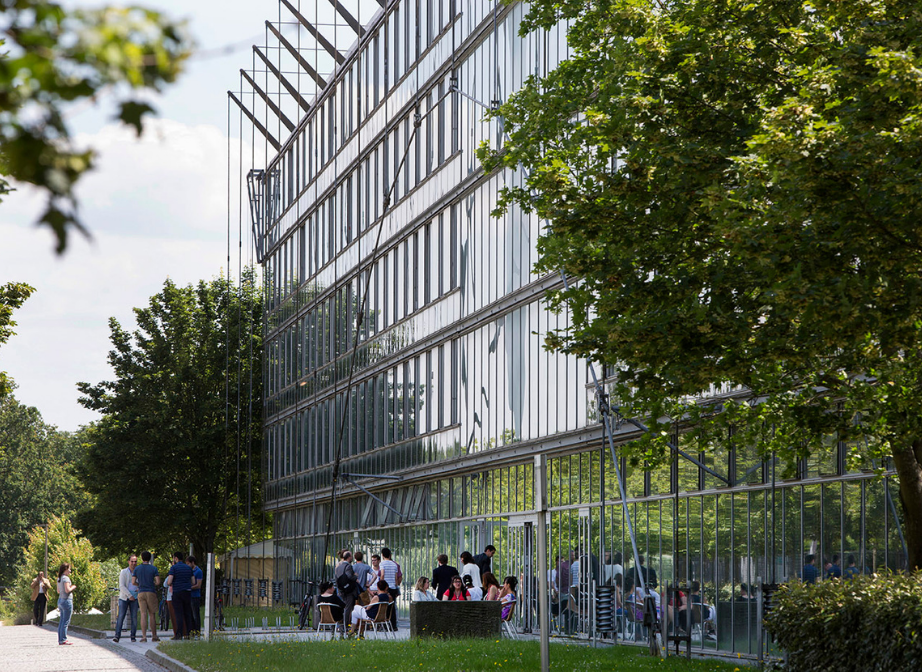
The location of the School, from the center of Paris to Champs-sur-Marne
Since its creation, the School has occupied many buildings in the center of Paris. Initially concentrated in the Marais district, near Trudaine's residence, the School moved several times before settling in 1845 for more than a century in the Hôtel de Fleury, Rue des Saint-Pères, in the 7th arrondissement.
In 1997, the School left its emblematic building to join the École Nationale Supérieure de Géographie in a single 30,000 m² building, of which it occupies two-thirds. The Sadi Carnot building, in Champs-sur-Marne, is a modern construction filled with light, where students from both schools meet under the vaulted glass roofs of a convivial atrium that is open to the world.
In 2012, the new Coriolis building, also located in Champs-sur-Marne, was inaugurated and hosts teaching and research activities. Through its architecture and design, it integrates issues of sustainable development into the projects of the School and its students.
The building is arranged around a vast suspended garden, shaded by the roof which produces energy using photovoltaic panels. It received the French NF High Environmental Quality Certificate (rated “exceptional”), and High Energy Performance certification in 2014.
The different categories of students
Students of the Corps des ponts et chaussées
The Corps des ponts et chaussées was the first major technical corps in terms of seniority. At the School, in the 18th century, there was only one official category of students: the students of the Corps des ponts et chaussées.
The creation of Polytechnique changed nothing, since the students who joined Ponts after leaving Polytechnique (known as "corpsards" in Polytechnique jargon) were still students of the Corps des ponts et chaussées.
Free students
At the same time, from the creation of the School until the middle of the 19th century, there was another category of students admitted to the School, known as “free students”. They were primarily foreign students.
The few French students were former Polytechnique students who had either resigned or were not admitted to the Corps des ponts. Their status was set according to the ordinances of 30.10.1832 and 03.05.1834. They were allowed to attend the oral classes and receive lithographies of the classes.
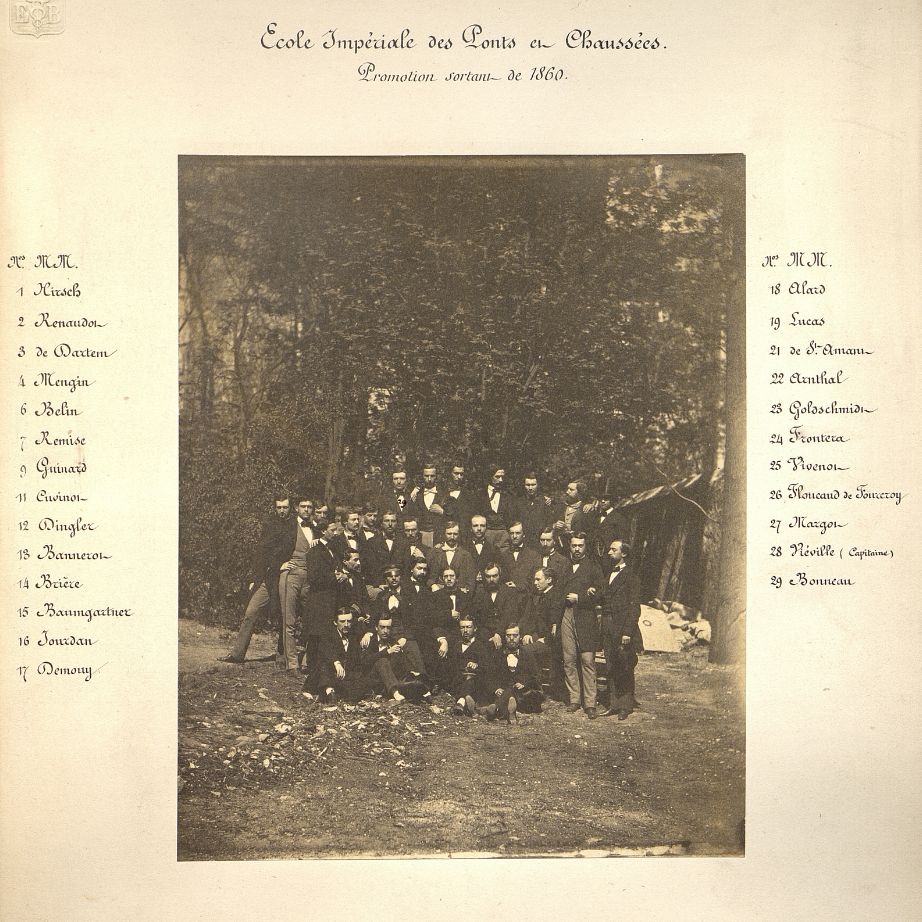
The status of foreigners with the same title was less clear. They were usually admitted on the recommendation of their embassy or a prominent person in their home country. They were only allowed to attend oral classes, provided they sat at the back of the class, and initially had no other rights. Their growing numbers, however, gave them the necessary clout to obtain advances in their status:
- they were gradually admitted to take exams on the courses they had taken to assess their ability to continue their studies at the School.
- some received a quarterly allowance to help them (this was the case for Polish refugees).
- from the end of the 1830s, these students increasingly requested language courses, although they were not all entitled to them, or participation in the annual work campaigns like the other students
- they also asked for permission to use or even acquire the lithographed course materials.
External students (civilians)
In 1851, a new category of students, closely related to the previous one, appeared: external (civilian) students. From among the many foreigners present, management chose those it deemed suitable for normal schooling. To facilitate recruitment, preparatory classes were set up in 1875. Foreign external students remained in the majority until about 1879, the French still preferring the "royal" option of Polytechnique and the Corps. The number of French students gradually increased until it equaled and then exceeded the number of foreign students.
The long saga of the admission of women
Jusqu’à la seconde moitié du XXe siècle, seuls les hommes étaient acceptés comme élèves à l'École des ponts et chaussées. La première femme, entrée en 1959, est une élève civile ; il s'agit de Marie-France Clugnet, diplômée en 1962. L’École polytechnique, elle, ne s’ouvre aux femmes qu’en 1972. La première élève du corps des ponts, Nicole Gontier, n’est donc diplômée qu’en 1977.
Until the second half of the 20th century, only men were accepted as students at École des ponts et chaussées. The first woman, who joined the School 1959, was a civilian student; Marie-France Clugnet, who graduated in 1962. École Polytechnique did not open its doors to women until 1972. The first student of the Corps des ponts, Nicole Gontier, did not graduate until 1977.
Although there had been earlier attempts. At the very beginning of the 20th century, the School received two Russian women as unregistered students, between 1901 and 1903, but their names were not recorded and, above all, they did not graduate.
In 1919, the Director reported that a young girl had asked what jobs a woman who had attended École des ponts et chaussées could aspire to. The Board was called upon to respond to this request and thus decide whether or not the School should admit female students.
The discussions took several months. In 1920, in view of the precedents set by other Grandes Écoles, the Council considered that there was nothing to prevent women from being admitted as students. In the following decade, young women were admitted to the entrance exam several times, but were not deemed eligible.
In the 1930s, the tone changed. The Director received a letter requesting that foreign women be admitted to take the entrance exam for enrolled foreign candidates. Surprisingly, the issue was once again seen as worthy of debate, when it had supposedly been decided in 1920.
The Council members were unanimous in their arguments: “It takes men to manage construction sites”. They argued that the 1920 decision was merely circumstantial. The Council also noted that the regulation "contains no provision explicitly excluding women" but none in favor of their admission. At the time it was established, the possibility of receiving female students was never even considered.
Consequently, the Council decided “to interpret the regulation as not allowing the admission of women to École des ponts et chaussées”. It was not until the 1960s that the situation changed.
There were still very few women until the mid-1970s, but their numbers gradually and steadily increased over the following decades. Women now represent slightly more than a quarter of the total number of students.






